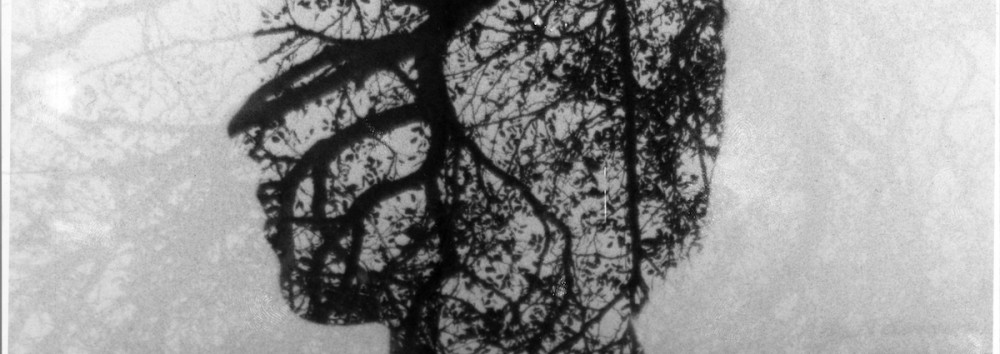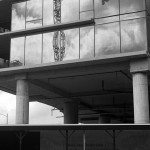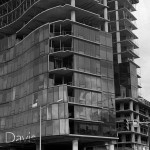OVERVIEW:
If you recall, all projects in the first quarter revolve around the theme of “community”. At the beginning of the semester, we brainstormed what Community looked like, with many people saying that community is a combination of people, physical environment, values, foods, activities, and similar interests. To explore these ideas, Projects 1 and 2 were about relationships – your relationship with yourself and then strengthening relationships with those in your immediate community (the classroom). Project 3 is about symbolism and how inanimate objects may be loaded with meaning and represent different values we hold dear.
Project 4 asks you to combine what you learned in previous projects to actually enter into a community you belong to and document it from multiple perspectives. Think about where this community gathers, who is part of this community, and what values/activities/similar interests bind you together. Photograph the landscape or physical environment of this community, the people who are part of this community, activities that connect you, and figure out how to capture your shared values. It will help if you choose a community that you have easy access to – if you want to photograph your home town but you’re a boarder and you live on a neighbor island…maybe not a good community for this project.
SITUATION: In the near future, there is a complete media blackout and freedom of press is restricted unless authorized by the government. Cameras are confiscated, while creating art and distributing images is highly regulating, if allowed at all.
YOUR ROLE: Youʻre one of the last people with cameras and the ability to make images, and you are tasked with documenting your community to 1) preserve for future generations and 2) raise awareness of the state of our community.
You must use both your technical and creative skills to document the state of the world in 2017 to tell people in the future so that the reality of 2017 is not erased from history books. The challenge is to photograph your community in such a way that it informs people about the physical environment, people, and values.
WHAT TO TURN IN:
- Wednesday, October 4 – Project due
- 1 roll of film/contact sheets
- 3 8″x10″ prints that best communicate a message about your chosen landscape
- Friday, October 6 – Project Evaluation due, using full sentences and correct grammar. A good evaluation should take you 15-30 minutes to complete.
AT THE END OF THIS PROJECT, STUDENTS WILL BE ABLE TO:
- continue building familiarity with their camera and the darkroom process
- explore a new photographic genre
- recognize the roll photography plays in our understanding of time and place
NEW EQUIPMENT: If you want to use new equipment for this project, say so in your project proposal. The equipment will go to the first people who request it in their project proposal. The sooner you turn in your project proposal, the more likely you’ll be able to use new equipment.
- Wide angle lens – 19mm
- Macro-extension tube
- Telephoto lens – 80mm-200mm
- Lensbaby, tilt-shift lens
- TLR camera
NEW PROJECT RUBRIC HERE: NEW-Photo2-Rubric-proj2
EXAMPLES/INSPIRATION:
Here’s an example of a Project Proposal and some corresponding images that could’ve came out of it:
- Example Proposal for Project 2
National Geographic photographer Chris Rainier focuses on a cultural landscape, focusing on different cultures from specific perspectives – tattoos around the world, sacred landscapes/architecture, etc.
– Photographer Edward Burtynsky focuses on manʻs impact on the natural world, describing his work below:
Nature transformed through industry is a predominant theme in my work. I set course to intersect with a contemporary view of the great ages of man; from stone, to minerals, oil, transportation, silicon, and so on. To make these ideas visible I search for subjects that are rich in detail and scale yet open in their meaning. Recycling yards, mine tailings, quarries and refineries are all places that are outside of our normal experience, yet we partake of their output on a daily basis.
These images are meant as metaphors to the dilemma of our modern existence; they search for a dialogue between attraction and repulsion, seduction and fear. We are drawn by desire – a chance at good living, yet we are consciously or unconsciously aware that the world is suffering for our success. Our dependence on nature to provide the materials for our consumption and our concern for the health of our planet sets us into an uneasy contradiction. For me, these images function as reflecting pools of our times.
– Kapulani Landgraff’s installation and photographs of “Pono’iwi” talks about Hawai’i’s long practice of taking sand from beaches for use in construction sites despite the fact that Native Hawaiians once buried ‘iwi in the sand dunes. Landgraff says that, “Despite legislation providing a process for protecting Hawai‘i burials and the establishment of burial councils for each island, there is a continued pressure to develop Hawaiian āina (land) and Hawaiian iwi are constantly threatened.”
– Brandon Ngʻs “Talk Story” – “This project adopts the ideas behind Hawaiian oral history and applies them to the stories being made by all who inhabit contemporary Hawaiʻi. Individuals within the community were asked to answer the question: What does it mean for you to live in Hawaiʻi today? Together, the stories they submit set a framework of how our common and uncommon experiences shape this shared place.”
– Urban Landscapes – Fan Ho started photographing at a young age. Largely self-taught, he captured images of urban Hong Kong, exploring streets, slums, markets, and alleyways. People are often found in his images, but as elements within the overall landscape helping to create human emotions within the scene. Great attention to light, shadow, and composition lends his images a sense of wonder and mystery.
– Simon Roberts – “British Photographer Simon Roberts chooses to embark on long-term, in-depth visual studies of people and the places they live. He describes his work as socio-documentary photography recording signs of visual anthropology…His first year-long study of contemporary Russia and Russians in 2005 was published in 2007 as the highly-acclaimed photobook “Motherland”…For his second multi-year project, he chose to focus on the idea of “Leisure” in all corners of his own country, England. The resulting book, “We English”, was just published in October 2009.”
Other Photographers/Projects to look at:





